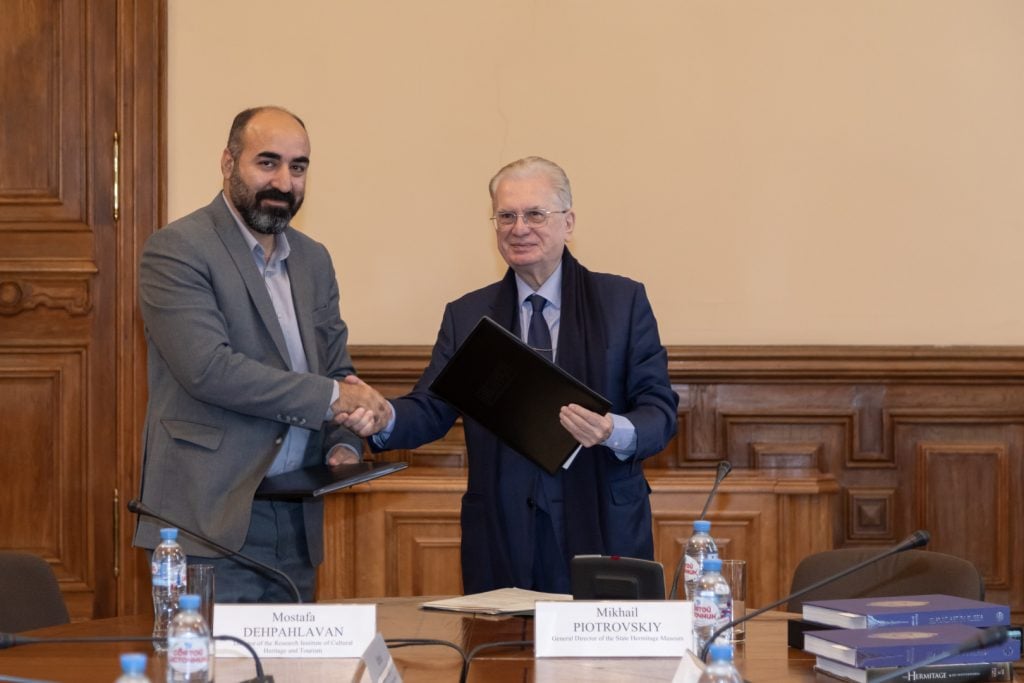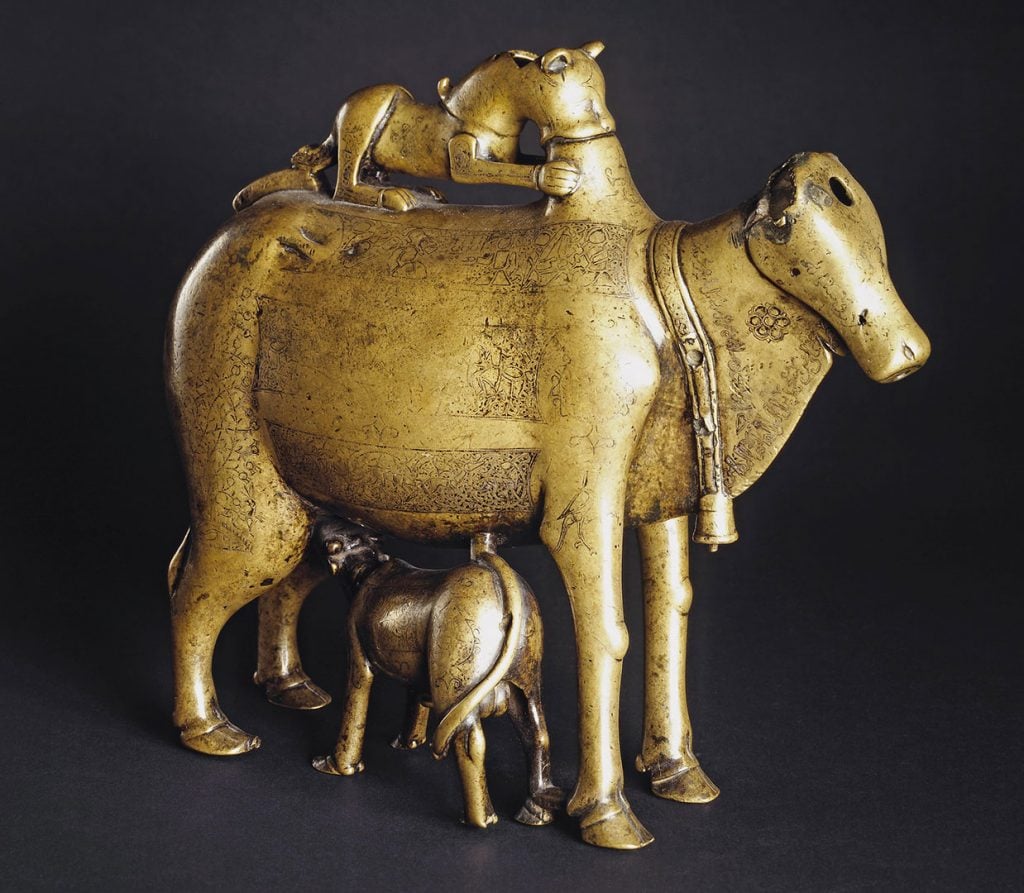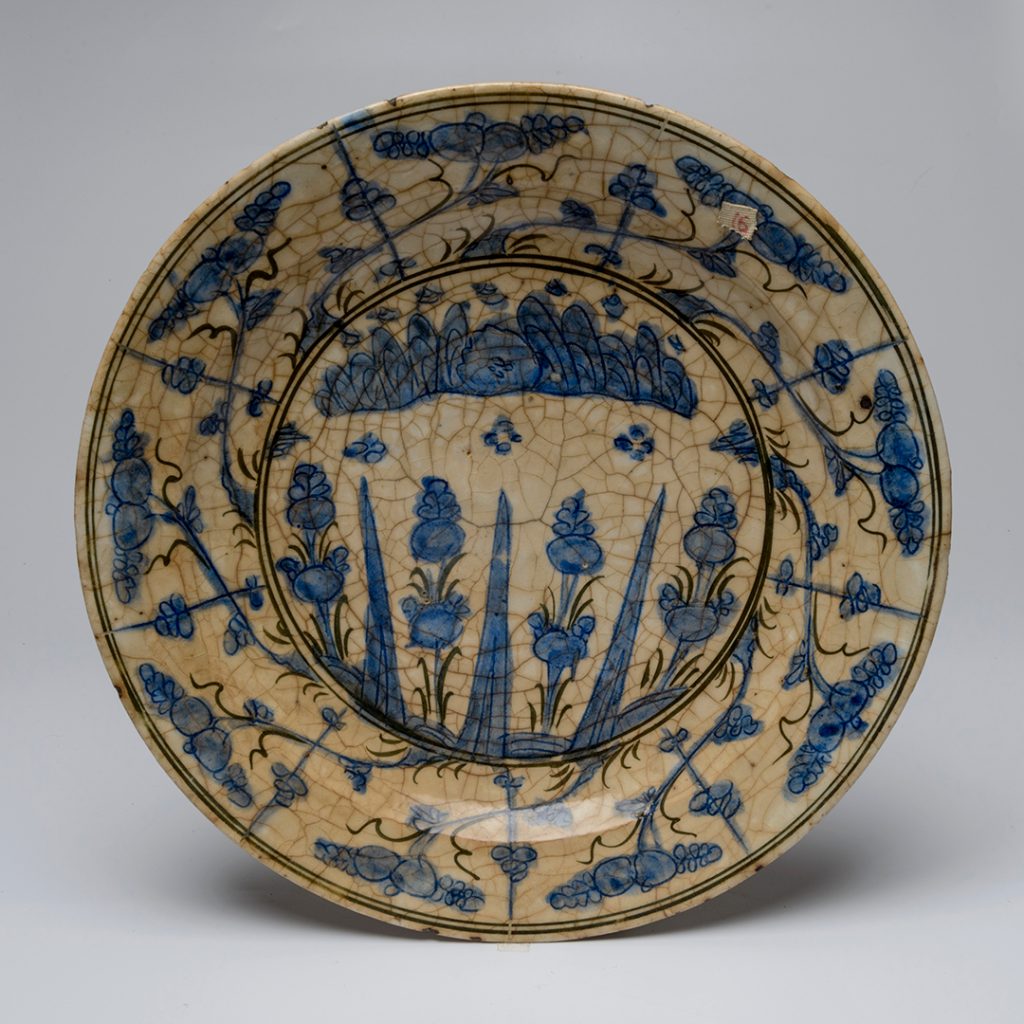Politics
The State Hermitage Museum Teams Up With a Tehran Cultural Heritage Organization as Russia Bolsters Ties With Iran
Western museums have largely cut ties with the St. Petersburg institution.

Western museums have largely cut ties with the St. Petersburg institution.

Sarah Cascone

Since Russia invaded Ukraine last year, museums in the West have shunned the nation’s State Hermitage Museum, whose director is a staunch supporter of the war. The Hermitage’s Amsterdam satellite, for example, cut ties with its parent organization and rechristened itself the H’ART Museum. Now, the St. Petersberg museum has turned elsewhere for international partnership, forging a new cooperation agreement with Iran’s Cultural Heritage and Tourism Research Institute.
“Iran is one of the main countries for our museum,” Hermitage director Mikhail Piotrovsky said in a statement as the two organizations formalized the agreement. “The Hermitage is in possession of a unique collection of works of Iranian art and is the custodian of long-standing traditions in the study of Iranian culture.”
At a September 2 meeting at the St. Petersburg museum, Piotrovsky—who Canada recently sanctioned for his outspoken support of the Russian war in Ukraine—and the head of Iran’s Cultural Heritage and Tourism Research Institute, archaeologist Mostafa Dehpahlavan, signed a memorandum of understanding outlining their plans for cultural collaboration. News of the deal was reported by the Art Newspaper.
“We can hold scholarly conferences, organize exhibition projects, train specialists, and carry out joint works by archaeologists from Russia and Iran at Tel Uzbeki,” Dehpahlavan said.

Aquamanile in the form of a zebu cow, Khorasan, from the Hermitage’s collection of Iranian art. Photo courtesy of the State Hermitage Museum, St. Petersburg.
“We will be preparing a plan of events which envisages joint participation in archaeological expeditions, the organization of a series of research and exhibition projects, as well as the holding of Hermitage Days in Tehran and Days of Iran in the Hermitage,” Piotrovsky added.
The Hermitage boasts a strong collection of Iranian art from the third century to the early 20th century, bolstered in July by the acquisition of 111 pieces of Iranian faience from the collection of the Khanukayev family. The museum opened a permanent exhibition, “Art of Iran,” in 2021, and held an online conference with Iranian museum officials and scholars during lockdown in 2020.
Russia is prioritizing relations with Iran as part of President Vladimir Putin’s official foreign policy strategy, announced in March. It called for “the full-scale and trustful cooperation with the Islamic Republic of Iran” with the goal of “promoting interfaith and intercultural dialog and understanding, consolidating efforts to protect traditional spiritual and moral values.”

A 17th century Iranian faience dish from the collection of the Khanukayev family acquired by the Hermitage Museum. Photo courtesy of the State Hermitage Museum, St. Petersburg.
The policy contrasted “friendly” Islamic countries such as Iran with “most European states” and their “aggressive policy” that is “undermining domestic political stability and eroding traditional Russian spiritual and moral values.” It described the U.S. as “the main inspirer, organizer, and executor of the aggressive anti-Russian policy of the collective West.”
With that framework in mind, Russia has little recourse other than to strengthen diplomatic ties with nations such as Iran, North Korea, and Myanmar—a strategy that has been dubbed “pariah solidarity.” (Putin and North Korean leader Kim Jong Un had a meeting earlier this month where cultural issues were on the docket.)
Relations between the Hermitage and Iranian cultural organizations, however, could be complicated by concerns over how some of the Russian museum’s Iranian artifacts were acquired. The Hermitage is among the institutions that owns luster tiles from the Imamzadeh Yahya, a historic tomb south of Tehran that dates from 1260 to 1310, which have been identified as looted artworks by a 2021 paper in the Journal of Material Cultures in the Muslim World and a recent article in the Tehran Times.